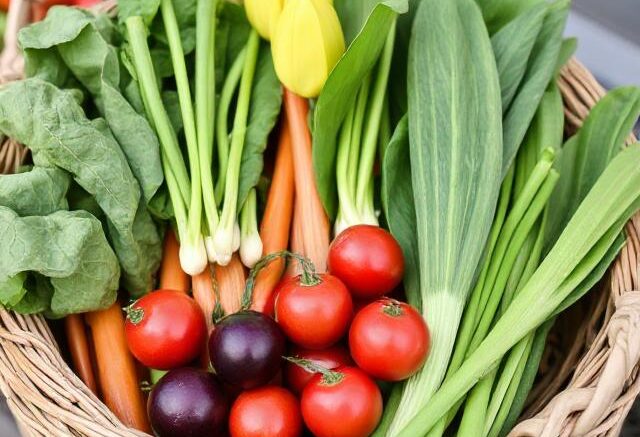Understanding May’s Ideal Planting Conditions
May is a pivotal month for gardeners, as it marks the transition from spring to early summer in many regions. This period is characterized by longer daylight hours and gradually warming temperatures, which create optimal conditions for both cool-season and warm-season vegetables. Understanding the specific climate of your region is crucial, as it influences the types of vegetables that can be successfully planted. In general, May offers a unique window where the risk of frost has diminished, yet the soil retains enough moisture from spring rains, providing an ideal environment for seed germination and plant growth.
Soil preparation is a key factor in ensuring a thriving garden in May. It is essential to test the soil’s pH and nutrient levels, as these can significantly impact plant health. Amending the soil with organic matter, such as compost, can improve its structure and fertility, promoting robust root development. Additionally, gardeners should be mindful of the local weather patterns, as unexpected cold snaps or heatwaves can affect young plants. By understanding and adapting to May’s planting conditions, gardeners can set the stage for a bountiful harvest.
Top Cool-Season Vegetables for May Planting
Cool-season vegetables are well-suited for planting in early May, especially in regions where the temperatures remain mild. Leafy greens such as lettuce, spinach, and kale thrive in these conditions, as they prefer cooler temperatures and can tolerate light frosts. These vegetables are quick to mature, allowing gardeners to enjoy fresh produce within a few weeks of planting. Additionally, root vegetables like radishes and carrots can be sown directly into the soil, as they benefit from the cool, moist conditions that May provides.
Another excellent choice for May planting is peas, which can be grown for their tender pods or sweet seeds. Peas are a versatile crop that can be planted in succession to extend the harvest period. They also have the added benefit of fixing nitrogen in the soil, which can improve the fertility for subsequent plantings. When selecting cool-season vegetables, it is important to consider the specific varieties that are best suited to your local climate, as this can influence their growth and yield.
Warm-Season Vegetables to Start in May
As May progresses and temperatures continue to rise, it becomes an ideal time to start planting warm-season vegetables. Tomatoes, peppers, and eggplants are popular choices, as they thrive in the warmth and can be transplanted outdoors once the soil has sufficiently warmed. These vegetables require a longer growing season, so starting them in May ensures they have ample time to mature and produce fruit. It is important to provide these plants with adequate support, such as stakes or cages, to encourage healthy growth and prevent damage from wind or heavy fruit loads.
Other warm-season vegetables to consider planting in May include cucumbers, squash, and beans. These crops are typically direct-seeded into the garden, as they grow quickly and can take advantage of the increasing temperatures. Cucumbers and squash benefit from being planted in mounds, which improves drainage and allows the soil to warm more quickly. Beans, on the other hand, can be planted in rows or as part of a three-sister garden, where they grow alongside corn and squash, providing mutual benefits to each plant.
Companion Planting Tips for May Gardens
Companion planting is a strategic approach to gardening that involves growing certain plants together to enhance growth, deter pests, and improve yields. In May, gardeners can take advantage of this technique by pairing compatible vegetables and herbs. For example, planting basil alongside tomatoes can improve the flavor of the tomatoes and repel harmful insects. Similarly, marigolds can be interplanted with a variety of vegetables to deter nematodes and other soil-borne pests.
Another effective companion planting strategy is to use taller plants to provide shade for more delicate crops. For instance, corn can be planted alongside lettuce or spinach, offering protection from the harsh midday sun. Additionally, planting aromatic herbs such as rosemary or thyme near susceptible vegetables can help mask their scent from pests. By carefully selecting companion plants, gardeners can create a more balanced and productive ecosystem in their May gardens.
Maximizing Yield with May Planting Strategies
To maximize yield in a May garden, it is essential to employ strategic planting techniques that optimize space and resources. Succession planting is one such strategy, where new crops are sown at regular intervals to ensure a continuous harvest throughout the growing season. This approach is particularly effective for fast-maturing crops like radishes and lettuce, which can be replanted every few weeks. Additionally, intercropping, or planting different crops in close proximity, can make efficient use of available space and resources, leading to higher overall yields.
Another important consideration for maximizing yield is the use of mulches and cover crops. Mulching helps retain soil moisture, suppress weeds, and regulate soil temperature, all of which contribute to healthier plants and increased productivity. Cover crops, such as clover or vetch, can be planted in between vegetable rows to improve soil fertility and structure. By implementing these strategies, gardeners can enhance the productivity of their May gardens, ensuring a bountiful harvest throughout the growing season.


Be the first to comment on "Best Vegetables to Plant in May for an Amazing Garden"